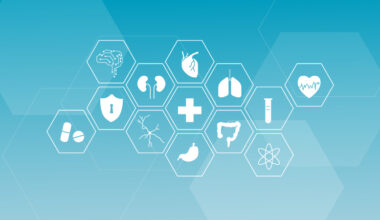
The healthcare industry runs on data. Managing databases is an arduous task, the most responsible task, as it directly impacts patients’ overall care management, and a tiny misinterpretation could cost lives! Big Data and AI-ML-powered analytics have changed the way you process data and predict patient care methods and outcomes. Healthcare data analytics has massive benefits viz., treatment cost reduction, prediction of epidemics(COVID or SARS and the likes), avert preventable diseases, precise & accurate diagnosis, preventive and precision medicines are available on time, and more. If you are a physician, a doctor, you stand on the frontline of healthcare. What are the top ways healthcare data analytics can help you in disseminating your noble service to humanity,i.e.patientcare? Let’s discuss!
1. Descriptive Data Analytics
Descriptive Analytics is widely used in the healthcare segment especially in clinical research. As per one Healthcare meta-analysis report, 48% of clinical research studies were being done on a methodology based on descriptive analytics. Besides clinical research, descriptive healthcare analytics are increasingly adopted in other research areas related to pharmacovigilance, public health, mental health as well. Pharmacovigilance is an excellent example of the efficacy of data analytics in helping physicians in terms of immediate and actionable information. It is helping physicians most directly as they can retrieve actionable insights and information for prescribing medicines, as in the case of researchers’ data mining study that showed FDA’s adverse remarks about statins. It revealed that pravastatin, rosuvastatin, simvastatin were linked to severe renal failure. This way, physicians could get actionable information about these statins towards prescribing them. Furthermore, descriptive data analytics help doctors/physicians with treatment programs by identifying demographics, for example, oncological insights like cancer trends and related expenditure help them take the call. Another significant example of its usage aspects is the current pandemic. The COVID challenge brought to fore the need for real-time monitoring of several healthcare channels including supply-chain,bed-capacity, supply of oxygen cylinders, concentrators, basis a specific region. Methodologies like data visualization, data mining to carry out a descriptive analysis of a given case are indeed noteworthy how physicians are leveraging descriptive analytics capabilities.
2. Predictive Analytics
As frontline workers, physicians have realized the significance of enhanced predictive analytics during the COVID crisis. Being sudden, hazardous, uncertain in character, COVID posed a serious challenge to them to handle appropriately. Adopting analytical methods in a predictive manner, they could anticipate future developments and cases backed by an advanced level of precision, agility, and speed that ensured efficient management of the situations before them. Doctors and physicians do get better experience using predictive analytics for the treatment of chronic illnesses, like kidney disease. They can easily diagnose the early signs of CKD (Chronic Kidney Disease) by implementing proper data analysis. As per researches, low-level data in databases are digitally transformed into high-level information/knowledge discovery that helps to detect CKD symptoms/patterns in an early stage. This allows healthcare management to improve their decision-making process; they can efficiently allocate resources and plan for patient-centric management conducive to business outcomes.
3. Prescriptive Analytics
Prescriptive analytics happens to be the natural progression occurring from procedures of descriptive and predictive analytics. It can substantiate the stand by removing guesswork that emerged out of data analytics. Prescriptive analytics in healthcare adopts a similar modeling approach to predict outcomes and then utilizes the maximum capabilities of AI-ML, business rules, several algorithms to do a simulation of varied approaches to suggest the best possible actionable insights. Prescriptive healthcare analytics is helping healthcare businesses to adopt cost-effective procedures as it curbs the overusing of testing, screening, and other diagnostic tests. As per Harvard Business School, Prescriptive Analytics has the capabilities to gauge patients’ early medical conditions, the pre-existing ones that help to evaluate further risks and suggest preventive treatment methods to the physicians.
Bottomline
Healthcare Data Analytics is helping the healthcare fraternity with massive returns on business as well as advanced patient care provision. Technology proves to be the soulmate of doctors and physicians as they juxtapose roles based on cases and situations such as pandemics, patients suffering from chronic illness, etc. Big Data, Descriptive Analytics, Predictive Analytics, Prescriptive Analytics, all are the varied faces of the same dice. Algorithms are here to stay.
Interested to know how data analytics can enhance your healthcare business growth? Contact Us.






